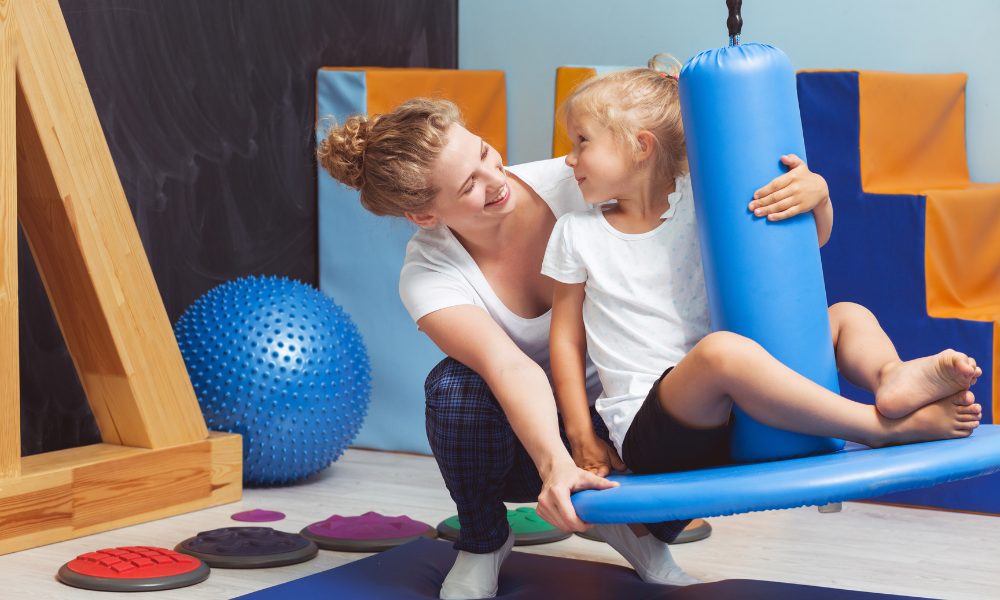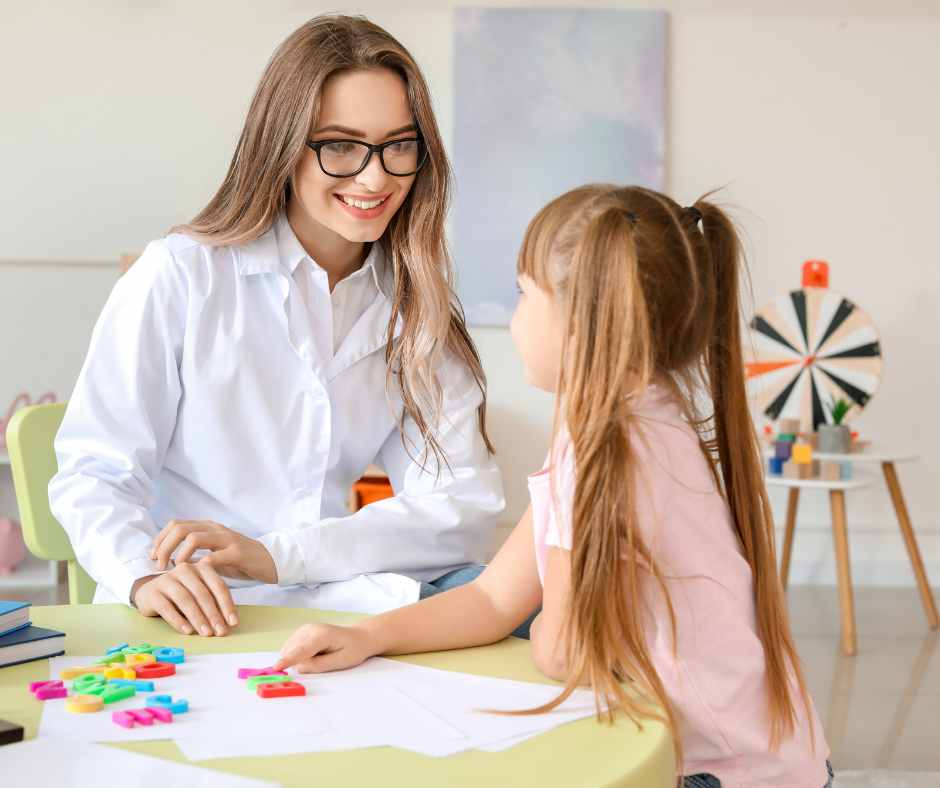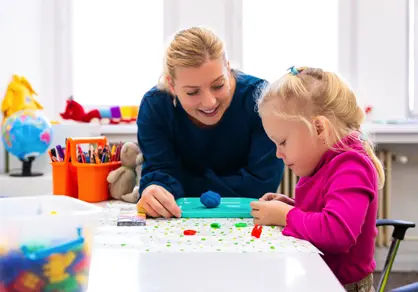Esperanza adamantly feels that providing therapies that are consistent with scientific evidence ensures the progress of every kid. Balance is essential for the development of a baby’s motor abilities, cooperation, and sensory integration. Proprioception is the ability to perceive one’s spatial location and is a major component of one’s gross and fine motor skills, spatial perception, and balance system. Two categories of information include proprioception: conscious perception and unconscious perception. Understanding these distinct systems will help parents better support their children’s development.
Proprioception: What is it?
Proprioception ranks as one of the essential sensory systems together with vision hearing taste and smell and touch in human physiology. The receptors known as proprioceptors exist specifically in muscles tendons and joints. The receptors maintain a consistent communication link with the brain to transmit information about force measurement and body position as well as motor movement to the brain.
Proprioception provides essential support to children because it helps them obtain motor skills needed to navigate their environment while completing activities ranging from walking to leaping and dressing themselves to speaking clearly. Proprioception works with two additional nervous systems: the vestibular system for movement and balance functions as well as the haptic system that manages touch capabilities.
Awareness of Proprioception
When people can actively detect their body parts and body motions the phenomenon is called conscious proprioception. Through conscious proprioception children can conduct purposeful activities including reaching, handwriting and dressing because of their positional awareness. The ability to connect consciously with their environment enables infants who have developed conscious proprioception.
When sensory pathways become active in the somatosensory cortex the individual brain region that processes sensory information allows conscious proprioception to occur. Memory functions of children allow them to watch how their body and movements develop while completing tasks which makes this type of proprioception dependent on thinking ability.
The maturation process for children through activities requiring fine motor control results in advanced conscious proprioception development. Cutting activities along with drawing and putting puzzles together fall under the category of tasks which require substantial conscious proprioception abilities.
Implicit Proprioception
Contrasted to conscious proprioception the unconscious form operates automatically. The brain operates through subconscious pathways which allow it to automatically control posture together with body movements. The brain areas named cerebellum and basal ganglia form the base of this system because they control motor abilities and coordination.
Our body performs automatic motions because of autonomic proprioception. Walking as well as posture maintenance together with complex physical activities such as sprinting or leaping belong in this category. People develop unconscious proprioception spontaneously by performing repetitive motions during exercise which then becomes part of their muscle memory systems.
The development of big motor abilities including running and balancing and playing sports depends on cognitive proprioception for children. Manual concentration for each step is not required because this skill helps children perform these movements automatically. This method enables children to carry out their daily activities without obsessive thoughts about their posture while standing or sitting at desks.
Scientific Information Regarding Proprioception
The development of motor skills together with sensory integration depends strongly on proprioception research shows. Studies link body position detection problems among children to difficulties with self-regulation and problems with balancing and coordinating their movements. The difficulties manifest in inadequate body coordination which can produce handwriting problems physical participation difficulties and several other behavioral indications.
The vestibular system stands as the direct controller of balance perception because it connects to proprioceptive systems. The essential role of proprioceptive cues becomes clear since they directly influence body motion through space which matters for every aspect from simple walking to advanced sporting abilities.
The therapists gain the ability to develop specific programs due to their understanding of how proprioception functions consciously and unconsciously. Total child development relies on proprioception because automatic body movement control systems and body posture understanding can enhance its function.
How Esperanza Counselors Assist
Esperanza’s therapists have extensive training in sensory integration and proprioceptive processing. Our knowledgeable staff is thoroughly trained in the most recent treatments and techniques supported by research, guaranteeing that we can assist kids with proprioceptive difficulties. Using a range of methods that target both conscious and unconscious proprioception, our therapists are adept at helping kids develop their motor skills, interaction, and sensory processing.
Among the courses our therapists take are:
- Vestibular-Proprioceptive Tasks: To enhance balance, coordination, and body awareness, our therapists employ exercises like swinging, leaping, or rolling that combine proprioceptive and vestibular stimulation.
- SIT, or auditory integration treatment: By involving children in organized activities that focus on sensory integration, this method helps them receive sensory information—including proprioceptive input—more effectively.
- Therapeutic Play: Our therapists employ play-based techniques to assist kids in organically developing their proprioceptive abilities since play is essential to growth. Pretend play, real-world games, or interactive activities are all effective ways for kids to develop proprioceptive awareness while having fun.
- Gross and Fine Motor Training: Both conscious and unconscious proprioception are strengthened in youngsters through activities such as obstacle courses, fine motor tool use, and building block play.
Furthermore, our therapists employ evidence-based strategies such as the Ayres Sensory Integration® (ASI) framework, which aims to assist kids in incorporating proprioception and other sensory inputs into their everyday lives in a way that meets developmental objectives and is both functional and helpful.
Strategies for Parents to Encourage Proprioception at Home
Parents can significantly help their children’s proprioceptive growth. To promote both conscious and unconscious proprioception, some easy techniques are as follows:
- Balance-demanding activities include walking in a line or playing games like “Simon says” that call for precise motions.
- Include movement breaks throughout the day, including crawling through tunnels, bouncing on a trampoline, or slowly spinning in a chair that is safe.
- In order to provide deep pressure input that improves proprioceptive awareness, use weighted blankets or vests (under expert supervision).
- Encourage the development of fine motor skills by constructing with little blocks, cutting with scissors, or sketching in order to improve conscious proprioception.
Final Words
Proprioception functions as a key sensory system to manipulate various motor capabilities and collaborative functions as well as sensor integration processes. Children need functioning proprioception to interact with their environment finish tasks and build friendships during both conscious and unconscious states. The expert team at Esperanza employs evidence-based methods to work hands-on with children to develop conscious and unconscious proprioception skills that enable each student to reach maximum developmental potential.
Our therapy services offer support for children’s developmental needs and we encourage you to contact us immediately about possible concerns regarding their proprioceptive abilities. Our staff at Esperanza will provide continuous support to your child while they progress towards more independence alongside greater self-assurance and achievement.



